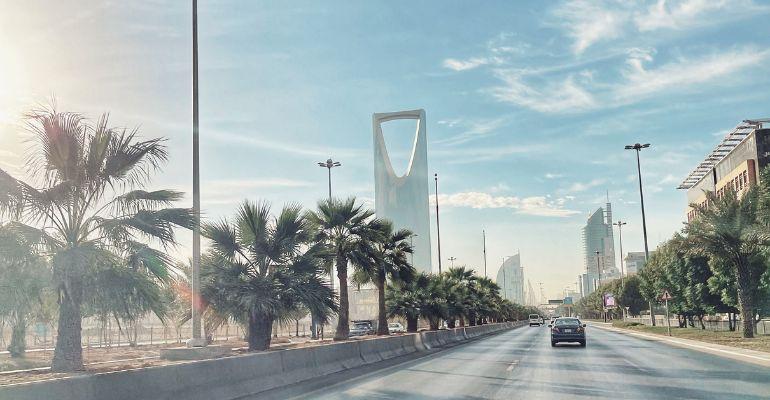Saudi Arabia's real estate market started strong in early 2024, thanks to the Vision 2030 strategy. This plan is transforming the economy and driving growth in many areas. These include residential, hospitality, office, and retail sectors, according to JLL's latest KSA Real Estate Market Dynamics Report.
GROWTH IN THE SAUDI ARABIAN RESIDENTIAL SECTOR
The Saudi residential industry has also seen significant activity. By mid-2024, Riyadh and Jeddah received 27,500 new units. This brought Riyadh's total to 1.46 million units and Jeddah's to 891,000 units. Both cities expect to add another 16,000 units by the end of the year.
Prices for residential properties are rising. In Riyadh, sale prices jumped by 10% over the past year, and rents increased by 9%. Jeddah experienced slower growth, with sale prices up by 5% and rents rising by 4%. Despite higher construction costs, the outlook for the residential market is positive. Government initiatives to boost home ownership and ongoing infrastructure developments are key drivers.
In the Dammam Metropolitan Area (DMA), especially Khobar, the focus of residential development is shifting inland. While average sale prices stayed the same, rents in the DMA increased by 4%.

Riyadh is witnessing rising prices for residential properties with sale prices jumped by 10% over the past year, and rents increased by 9%.
SAUDI HOSPITALITY SECTOR SHOWS STRONG PERFORMANCE
Saudi Arabia's hospitality sector has also seen impressive growth. Average Daily Rates (ADR) in Riyadh soared by 25% from the previous year, driven by a rise in corporate events. Nationwide, occupancy rates grew by one percentage point. ADR also increased by 7%, and revenue per available room (RevPAR) went up by 8%.
In Makkah and Medina, RevPARs grew by 4% and 15%, respectively. Saudi Arabia aims to attract 150 million visitors by 2030 and plans to invest $800 billion in tourism and infrastructure. This investment supports a positive long-term outlook for the hospitality sector.
SAUDI ARABIAN OFFICE MARKET TRENDS
The Saudi office market is strong with high pre-leasing activity for new, high-quality developments. In the first half of 2024, Riyadh added 52,000 square meters of new office space. This brought the total to 5.2 million square meters. Yet, Jeddah’s office space stayed at 1.21 million square meters.
Demand for top-quality office space, especially in Riyadh’s northern region, pushed Grade A rents up by 19%. Rents now stand at SAR 2,090 per square meter annually. Jeddah saw an 11% increase in rents, reaching SAR 1,335 per square metre.

High-quality office space in high demand, especially in Riyadh’s northern region with Grade A rents up by 19%.
SAUDI RETAIL MARKET DEVELOPMENTS
The Saudi retail market stayed stable in the first half of 2024. New, high-quality retail spaces appeared, and consumers wanted better experiences. In Jeddah, several zones of Souq 7 finished construction. This added 106,000 square meters of retail space, bringing the city's total to 2.16 million square meters. Rents for super regional malls went up by 4%. Yet, rents for regional malls dropped by 4%.
In Riyadh, the retail space remained at 3.48 million square meters. There's an expected extra 77,000 square meters of retail space by the end of the year too.
There is also an increasing consumer interest in experiential retail. They favour entertainment, food and beverage options, and integrated cinema experiences along with shopping.
EXPERT INSIGHTS ON THE FUTURE OF SAUDI REAL ESTATE
Saud Alsulaimani, the Country Head of KSA at JLL, highlighted the rapid changes in Saudi Arabia's real estate market. The Kingdom's Vision 2030 goals drive this evolution. Growth and opportunities are expanding as the country approaches these goals. The strong demand for properties comes from a growing population, new infrastructure, and supportive government initiatives. These factors are accelerating growth in the real estate sector.
“Looking ahead to 2024, the key themes in KSA’s real estate sector will revolve around a focus on priorities, alignment, and collaboration between government projects. Effective engagement with the private sector will also be crucial, along with strategic talent management for sustainable growth,” he added.
A PROMISING FUTURE FOR SAUDI REAL ESTATE
Saudi Arabia's real estate market is changing rapidly thanks to the Vision 2030 strategy. The residential, hospitality, office, and retail sectors are all growing. Big investments in infrastructure, tourism, and urban development are driving this growth.
The Kingdom is aiming to become a major player in the global real estate market. It is attracting both local and international investors. So, the future looks promising for Saudi Arabia’s real estate. We can expect more innovations and sustainable development in the coming years. Vision 2030 will shape the Kingdom's economic future and improve residents' quality of life for the better.


